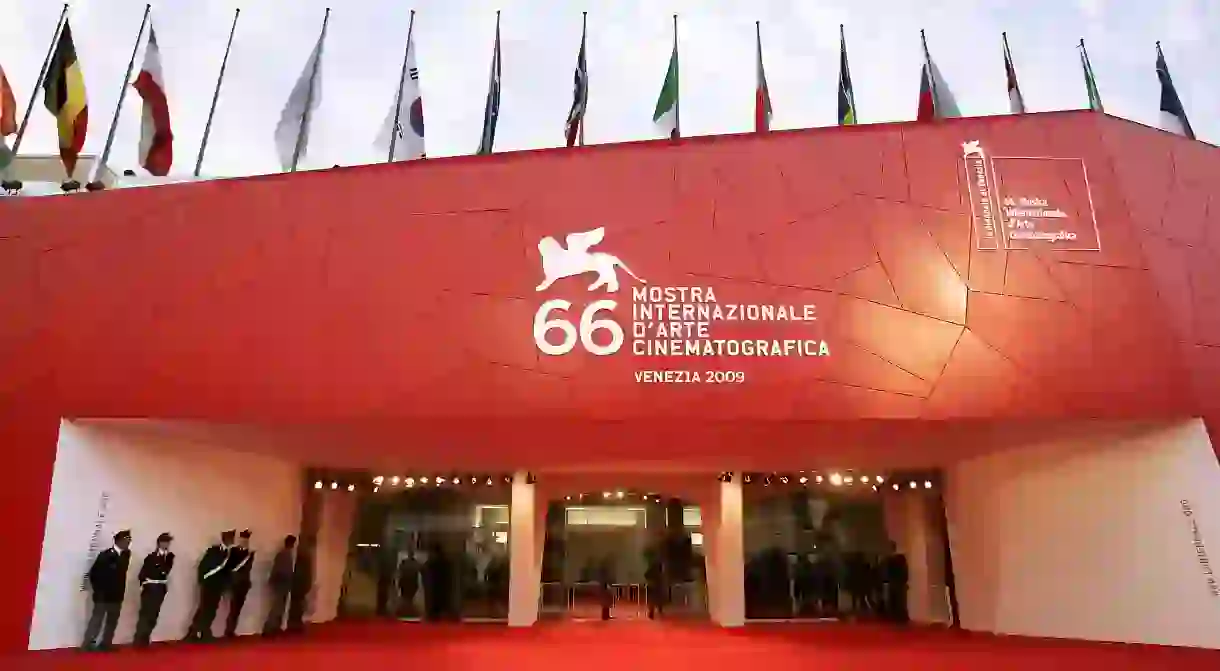Why Venice Is the Most Glamorous Film Festival in the World

Attracting the biggest names in the industry, the Venice Film Festival is the oldest, most glamorous film festival on the movie calendar. Here’s a guide to the event that kicks off the awards season.
The Venice Film Festival is held annually in the northern Italian city. It’s loosely part of the Venice Biennale but has evolved to standalone status as a yearly event. Recognising the best in international cinema, the festival’s big prize is the highly regarded Leone d’Oro (Golden Lion).

“Venezia is amazing, so magical and weird at the same time,” says Italian film journalist Eva Carducci when asked what makes the city so special as a destination. “You’ll smell the sea right outside the train station [when you first arrive], and if you walk in the narrow calle, it looks like you’re traveling back in time. It’s also a bit nostalgic because a lot of people can’t afford to live there anymore and they’ve left the building and moved away to the ‘land’.”
The oldest film festival in the world
Venice established itself as a hub of cultural endeavours during a period of Italian maritime dominance. The city became wealthy with the spoils of war and trade, in turn funding many artists who were attracted to the unique beauty of Venice, with its tight canals, incredible stonework and lavish plazas. The Biennale was introduced in 1895 as a showcase for traditional art, in time incorporating theatre, dance and architecture. The film festival was added to the calendar in 1932, which makes it the oldest film festival in the world.


Alongside the Berlin Film Festival and the Festival de Cannes, Venice is regarded as one of the “Big Three” international festivals. As it is the last festival to be held prior to the end-of-year awards, Venice is also used by filmmakers to premiere their Oscar contenders.
Where is the Venice Film Festival held?
Adding to the festival’s allure as the most glamorous film event on the calendar is its spectacular location.

The Lido, a seven-mile-long (11km) island in the Venice lagoon, is usually home to 20,000 local residents. This all changes in the 10 days of the summer when the film festival rolls into town. “During the Festival the Lido is crowded and packed,” Carducci tells Culture Trip. “Rents are crazy, as they [locals and hotels] all take advantage of the fact that if you are attending the festival you have to be there. Water taxis are so expensive – 10 minutes to San Marco will cost you €90 to go and €90 to come back.”

A bus service runs along the main street of Lido di Venezia, overlooking sandy beaches along the eastern side of the island. These naturally occurring sandbanks are mostly private areas owned by various hotels, but at the northern and southern tips of the Lido there are large public beaches.
Although it is regarded as one of the most glamorous places in the world today, the Lido was once known for its brothels, and before that as a makeshift barracks for soldiers heading to and from the Crusades.
“When you see Venice from the harbour of Lido, it looks like San Francisco seen from Alcatraz,” Carducci adds, highlighting just how trapped one can feel on the island when attending the festival.
Attending the Venice Film Festival
Getting to the festival is relatively easy but not cheap. For the really rich and famous there is an airport on the Lido itself where small aircraft can take off and land. The majority of visitors to Venice will, however, be arriving at Venice Marco Polo Airport or taking a train to and from the outskirts of the city, before getting a water bus.
“As press, the Venice Film Festival offers you the chance to easily access screenings, premieres and press conferences when compared to Cannes,” Carducci says, having attended the festival for several years. Members of the public can also attend and buy tickets to films, but it’s wise to book in advance as there are upwards of 3,000 press already scheduled to attend every year.

The Palazzo del Cinema serves as the main headquarters for the festival and also houses the main screening venues. The historic Sala Grande cinema has undergone a series of upgrades and renovations since it was first constructed in the 1930s, and can now accommodate over 1,000 guests.
Rivalling the “main” venue is the Sala Darsena, a purpose-built facility that actually has a larger capacity and as such often premieres some of the bigger film titles at the festival. The Palazzo del Cinema also has a number of smaller screening rooms that operate during the festival.

The Venice Film Festival has a glamorous reputation, much like the city that hosts it. It is the film event to be seen at, whether you’re a regular fan, a member of the press or an A-list celebrity.













